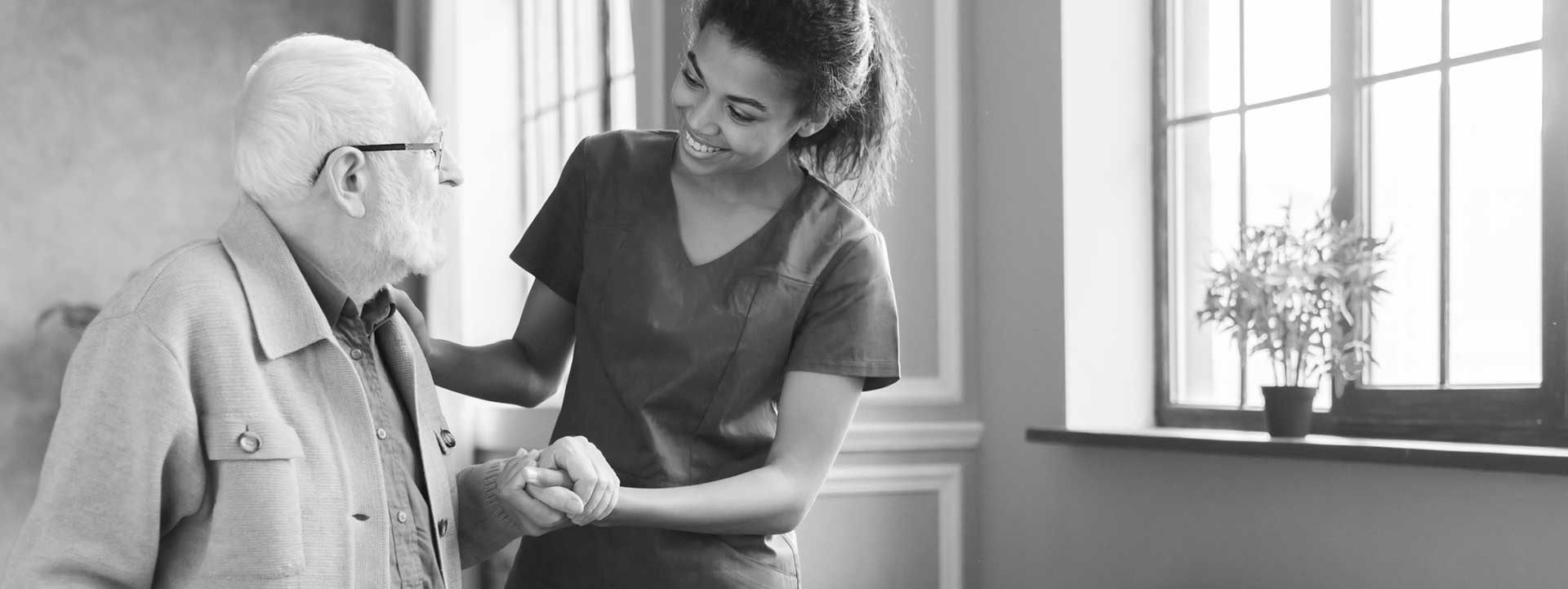On Your Feet: Common Foot Problems for Seniors

Did you know that each of your feet is a complex structure composed of 26 bones and 33 joints? Accompanied by over 100 muscles, tendons, and ligaments, your feet are intricate systems that provide support, balance, and mobility. As seniors, the health of your feet is crucial, not just for mobility, but as an indicator of broader health issues.
As you age, your feet’ skin and fat pads become thinner. Circulation and feeling in your feet may decrease. Your bones may become more brittle and susceptible to injury. A twisted ankle, broken bone, blister, or cut can significantly impact your comfort and mobility.
Taking care of your feet is an essential part of your overall health!
Table of Contents
The Impact of Aging on Foot Health
The aging process naturally affects many parts of the body, and the feet are no exception.
Over time, seniors may notice their skin getting thinner, their joints becoming stiffer, and their circulation slowing down.
These changes can make the feet more vulnerable to pain, injury, and other problems. That’s why foot care becomes even more important with age.
Common Foot Problems in Seniors
Plantar Fasciitis: Heel Pain in Seniors
Plantar fasciitis is a common cause of heel pain, especially for seniors. It occurs when the thick band of tissue on the bottom of the foot, called the plantar fascia, becomes inflamed. This can make walking painful, especially in the morning.
Stretches, supportive shoes, and sometimes physical therapy can help manage the pain and reduce inflammation.
Bunions and Hammertoes: Misalignment Issues
Bunions and hammertoes are two conditions occurring when the bones in the feet are out of alignment. A bunion is a bump that forms at the base of the big toe, while a hammertoe causes a bending or curling of the toe.
These conditions are more likely in seniors because of years of pressure on the feet. Proper footwear and foot exercises can help relieve discomfort, but severe cases might need surgery.
Arthritis: Stiffness and Pain in the Feet
Arthritis, especially osteoarthritis, can affect the feet and cause joint pain, swelling, and stiffness. This can make it difficult to walk or stand for long periods.
While there is no cure for arthritis, treatment options such as medication, physical therapy, and special shoes can help manage the symptoms and improve mobility.
Corns and Calluses: Skin Thickening and Irritation
Corns and calluses are areas of thickened skin that form due to friction or pressure. Seniors often develop these from shoes that don’t fit well or foot deformities.
While they are usually not serious, they can be painful if left untreated. Soaking the feet, moisturizing, and wearing cushioned shoes can help prevent corns and calluses from worsening.
Diabetic Foot Problems: Risks and Care
Diabetes can lead to poor circulation and nerve damage (neuropathy), which increases the risk of foot ulcers, infections, and even amputations.
Regular foot inspections, good hygiene, and professional care are essential to avoid serious complications.
Toenail Problems: Thickening, Fungal Infections, and Ingrown Nails
Thick, brittle toenails are common as we age, and fungal infections or ingrown toenails can add to the problem. If left untreated, these issues can cause pain and lead to infection.
Regular trimming, keeping the feet clean, and seeing a podiatrist for severe cases can help keep toenail problems under control.
4 Simple Steps for Keeping Your Feet Healthy
Choose Shoes That Fit Properly
Wearing well-fitting shoes is one of the best ways to protect your feet.
Shoes that are too tight can cause painful problems like blisters, corns, and even bunions, while shoes that are too loose might lead to instability and falls.
Look for shoes with proper arch support, a cushioned sole, and a wide toe box to give your feet room to move comfortably. Avoid high heels or shoes with narrow points that squeeze your toes.
Keep Skin Moisturized
As we age, the skin on our feet can become dry and cracked, leading to discomfort or infections.
To prevent this, apply a good moisturizer to your feet daily, especially after bathing. Use a lotion that hydrates and protects the skin, but avoid putting moisturizer between the toes, as too much moisture there can create the perfect environment for fungal infections like athlete’s foot.
Trim Toenails Properly
Regular toenail trimming is essential for avoiding ingrown nails, which can be both painful and prone to infection.
Cut them straight across rather than rounding the edges when trimming your nails. This simple step reduces the risk of the nail growing into the skin. If your nails are hard to manage because they’ve thickened or become brittle, consider soaking your feet in warm water to soften them, or ask a healthcare provider for assistance.
Inspect Your Feet Regularly
Check your feet often for any changes, especially if you’re dealing with diabetes or poor circulation.
Look for signs of redness, swelling, cuts, or sores that don’t heal. If you notice anything unusual, such as changes in color or persistent pain, it’s a good idea to consult a podiatrist.
Take the Next Step with Always Best Care of Desert Cities!
Professional support can make all the difference if you or a loved one are experiencing foot pain or other mobility issues. At Always Best Care of Desert Cities, we offer personalized senior care services to help you stay on your feet and maintain your independence. Our team of compassionate caregivers is trained to assist with daily foot care, mobility, and other essential needs, ensuring your comfort and well-being.
Contact Always Best Care of Desert Cities at 760-259-2234 to learn more and schedule your free consultation.





